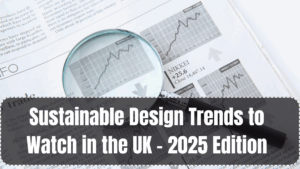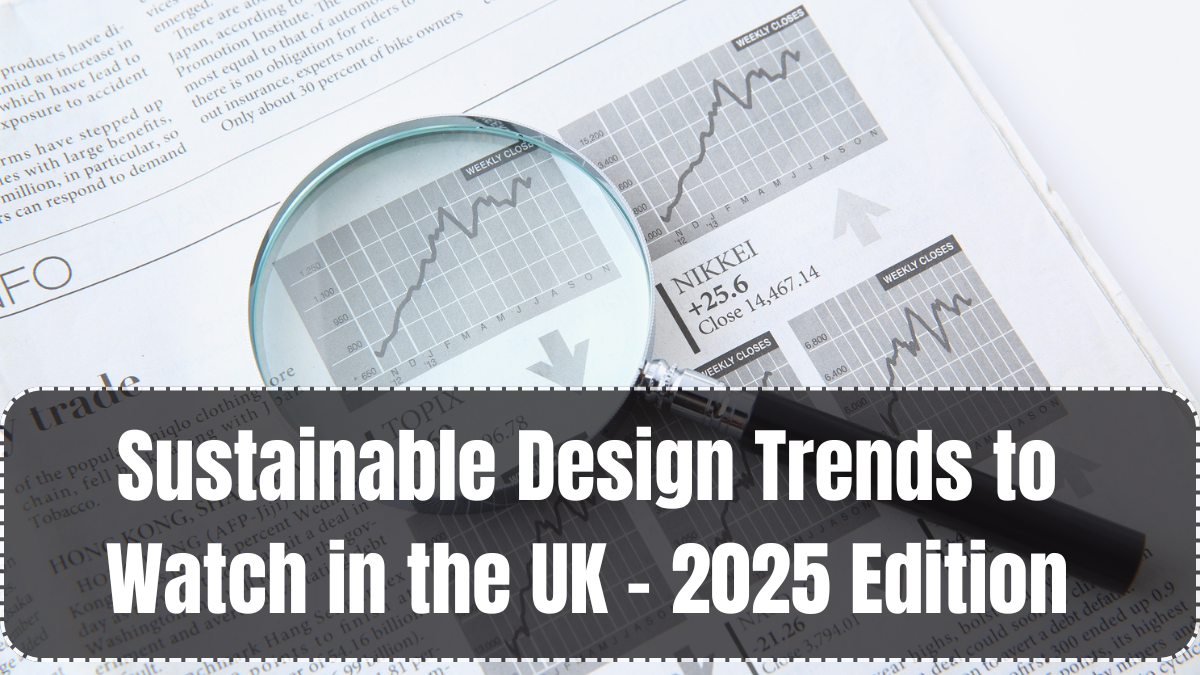As climate consciousness grows, sustainability is no longer a choice—it’s a necessity. In 2025, UK designers, brands, and studios are embracing green thinking not just for compliance, but as a core design principle. From packaging to digital interfaces, the Sustainable Design Trends UK 2025 highlight a shift toward environmentally responsible choices across all creative sectors.
Whether you’re a freelancer, an agency professional, or a brand strategist, adopting sustainable design practices is vital to remain relevant and responsible in today’s market. Let’s explore the top trends leading this eco-forward revolution.

Minimalist Design with Purpose
One of the strongest sustainable trends in 2025 is minimalism—not just as a style but as a function. By stripping design down to essentials, creators reduce digital weight, printing waste, and visual clutter.
Minimalist design includes:
-
Neutral colour palettes
-
Simple typography with maximum readability
-
Grid-based layouts that reduce visual fatigue
-
Fewer decorative elements, more white space
This approach reduces resource use while improving user experience, especially in digital products.
Eco-Friendly Packaging Design
Brands across the UK are now rethinking how their packaging contributes to the environment. In 2025, sustainable packaging has evolved beyond just recyclable materials.
Key packaging trends:
-
Use of biodegradable, compostable, or reusable materials
-
Designs that reduce ink usage or print area
-
Flat-pack structures that minimize shipping emissions
-
Informative labels encouraging recycling
Packaging now tells a sustainability story—it’s not just wrapping, it’s branding with a message.
Digital-First Sustainability
In a digital-first world, designers are realizing that even pixels consume energy. The Sustainable Design Trends UK 2025 focus on creating digital products that are lightweight, fast, and energy-efficient.
Practices include:
-
Optimizing images and assets for faster load times
-
Using darker UI themes to reduce screen power consumption
-
Simplified website architecture to reduce data transfer
-
Accessibility-compliant code to promote inclusive design
Greener websites don’t just help the planet—they improve SEO, UX, and device performance.
Local Sourcing and Artisan Revival
Many design studios and product companies are turning back to locally sourced materials and community-led art forms. Supporting local artisans and suppliers reduces the carbon footprint while adding cultural depth to projects.
Why it matters:
-
Less dependency on global shipping
-
Strengthens community economies
-
Adds authenticity and emotional value to design
-
Promotes traditional craftsmanship
In 2025, locally inspired design isn’t old-fashioned—it’s a premium brand advantage.
Sustainable Typography and Font Choices
Fonts? Yes, even your typeface choices impact sustainability. In 2025, designers are choosing fonts that use less data and print-friendly weights.
Trends include:
-
System fonts that don’t require extra downloads
-
Fonts with fewer glyphs and ligatures to save digital size
-
Clean sans-serif fonts optimized for print and screen
Every kilobyte saved contributes to a lighter, faster, and greener digital experience.
Certifications and Transparent Branding
Consumers in 2025 actively seek proof of eco-commitment. Brands are now incorporating certifications and clear sustainability messaging directly into their design language.
Common certifications and labels:
-
FSC (Forest Stewardship Council) for print and paper
-
Carbon-neutral or plastic-free labels
-
B Corporation logos
-
“Designed for Recycling” symbols on products
Design is now a powerful tool for communicating environmental values transparently and proudly.
Final Thoughts
The Sustainable Design Trends UK 2025 showcase how design is becoming a force for environmental impact, not just aesthetics. From packaging to pixels, today’s designers are blending creativity with responsibility. Small changes in material, layout, font, or sourcing can create long-term eco benefits. Sustainability isn’t just a visual trend—it’s a brand philosophy.
FAQs
What is the top sustainable design trend in the UK for 2025?
Minimalist and resource-efficient design—both in physical and digital formats—is leading the sustainable design movement in 2025.
How can packaging design be made more sustainable?
By using biodegradable or compostable materials, reducing print area, and designing compact shapes that reduce transport emissions.
Is digital design really connected to sustainability?
Yes. Lightweight websites and optimized assets reduce energy consumption in data centers and improve user performance.
What are some examples of sustainable fonts?
System fonts like Arial, Roboto, and Helvetica are more sustainable due to reduced file sizes and broad compatibility.
Why are UK brands adopting local artisan design?
It reduces environmental impact, supports local communities, and adds cultural authenticity that modern consumers appreciate.
Click here to know more.
